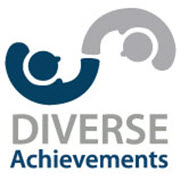Essential Reads from 2013

As a small business owner, I live by the adage that you must always be learning to grow and develop. To that end I read quite a bit (as I’m sure many of you do) and I wanted to share with you some of the books that had the most impact on how I have been and will be conducting business in 2014. Not all of the books were published in 2013, however, they were revisited or in one case, updated in 2013.
All have a great deal of valuable advise, strategies and tactics that the authors generously share that you can implement directly into your marketing and businesses immediately.
The list is by no means exhaustive, there were many great books to dive into this year and some are on my list for 2014 (next post). The seven +1 books are in no particular order and provide a brief description of why they made my ” Essential reads from 2013″ list. I’ve provided links for each book for your convenience (no affiliate relationship).
1. New Rules of Marketing & P.R. (4th addition) – David Meerman Scott.
The seminal book for all marketing, public relation and business leaders. As I understand it, this book is one of the main text used in most digital media training. The latest edition includes updates on the various platforms from previous editions and has included new platforms such as Pinterest. Full of interesting case studies and step-by-step processes that anyone can adapt to your current efforts.
1 +1 Bonus. Real-Time Marketing and P.R. – David Meerman Scott.
As a bonus edition, Scott’s Real-Time makes the case for how the days of planned full on campaigns are a thing of the past. A great example is the “United Breaks Guitars” case beyond just the complaint, lack of response and infamous YouTube video, but how Martin Guitars and a deal on a sturdy travel guitar case evolved from it in real time. It’s an eye opener that illustrates the need to not only be on social, but to be paying attention.
2. Start with Why – Simon Sinek.
You’ve likely seen the Ted Talk. The book gives you the opportunity to spend more time with the ideas and illustrations. As Sinek indicates, explaining “why” you do what you do and “why” it will matter to others, is clearly the hardest thing to articulate. The book provides excellent food for thought and guidance on your path. I’ve seen positive results with clients when they’ve changed the “feel” around their messages, not only in marketing, but even in calls for board members and others to share their journeys.
3. Born to Blog – Mark Schaefer and Stanford Smith.
As with many I know, I struggle with writing. This book is a great resource to help you overcome the barriers that may be holding you back from reaching your audience. Filled with practical and easy to use tips, it is an edition that you will revisit on a regular basis. As a fan and devotee of both Schaefer’s and Smith’s work, it was not surprising to find that the book makes blogging accessible to everyone.
4. The Go-Giver – Bob Burg and John David Mann.
Written as a parable, this book is easy to digest in a single sitting, but you’ll want to take your time with it. We’ve all experienced those moments when our backs are up against it and we’re not sure how to proceed. The ideas for ultimate success captured in a week’s journey are interesting and inspiring. In today’s world of instant access, remembering that old adages hold true “The more you give, the more you get”.
5. Contagious: Why Things Catch On – Jonah Berger.
Berger’s research and body of work on what makes things of interesting and why they get shared is a fascinating read. Filled with illustrative case studies and examples, Contagious provides the six (STEPPS) keys that will give you ideas that you can apply to your work and markets. In addition to the book, there are free resources available at Berger’s website to help you implement the ideas.
6. Epic Content Marketing – Joe Pulizzi.
Are you looking to make “Content Marketing” a central point of your 2014 efforts, then you will benefit greatly from reading Pulizzi’s new book. It is an essential tomb that will take you from the start of your journey and squarely place you on the road to success (success of course will depend on your efforts). To stand above the noise in your communities, you’ll need to be telling effective, interesting stories; Epic Content Marketing will provide you with the tools to do so, from developing your niche, understanding the content you have, and how to effectively distribute your message.
7. To Sell is Human – Daniel Pink.
Hate to tell you this, but we are all in sales, no matter our roles in our organizations. You’ve been in sales from the get go, every since you learn to try and influence outcomes for what you desired. Unfortunately, sales as a term has gotten such a bad reputation. In Pink’s latest effort, we learn why we are all in sales and how to do so without being slimy or overly salesy. Using lessons from social science, Pink builds a case for how sales can and is a honorable profession and indeed how most of our assumptions on what makes an effective sales person are likely wrong.
Finally, I want to share with you a wonderful post from Anne Kreamer in the Harvard Business Review “The Business Case for Reading Novels”. Kreamer starts by sharing her concern that we’ve all likely shared, guilt for taking the time to read for pleasure when there are so many worthy resources to help with our professional development. I used to feel the same way and my partner Joan only recently has rediscovered the absolute joy and benefits of reading for pleasure. The post makes a strong case for adding fiction to your reading list, based on research she discovered in Scientific American. Researchers have indicated that reading fiction helps build our understanding of real human emotion.
My fiction suggestion is a Canadian favorite. Robertson Davies’ “Fifth Business“. The book demonstrates how our actions, no matter how intended can impact others beyond what we can see.
What was on your Essential Reads from 2013 list?
Other best of reading lists:
Intuit’s Best Business Books 2013
Globe and Mail’s Top Business Books of 2013
INC’s Best Books for Entrepreneurs 2013


